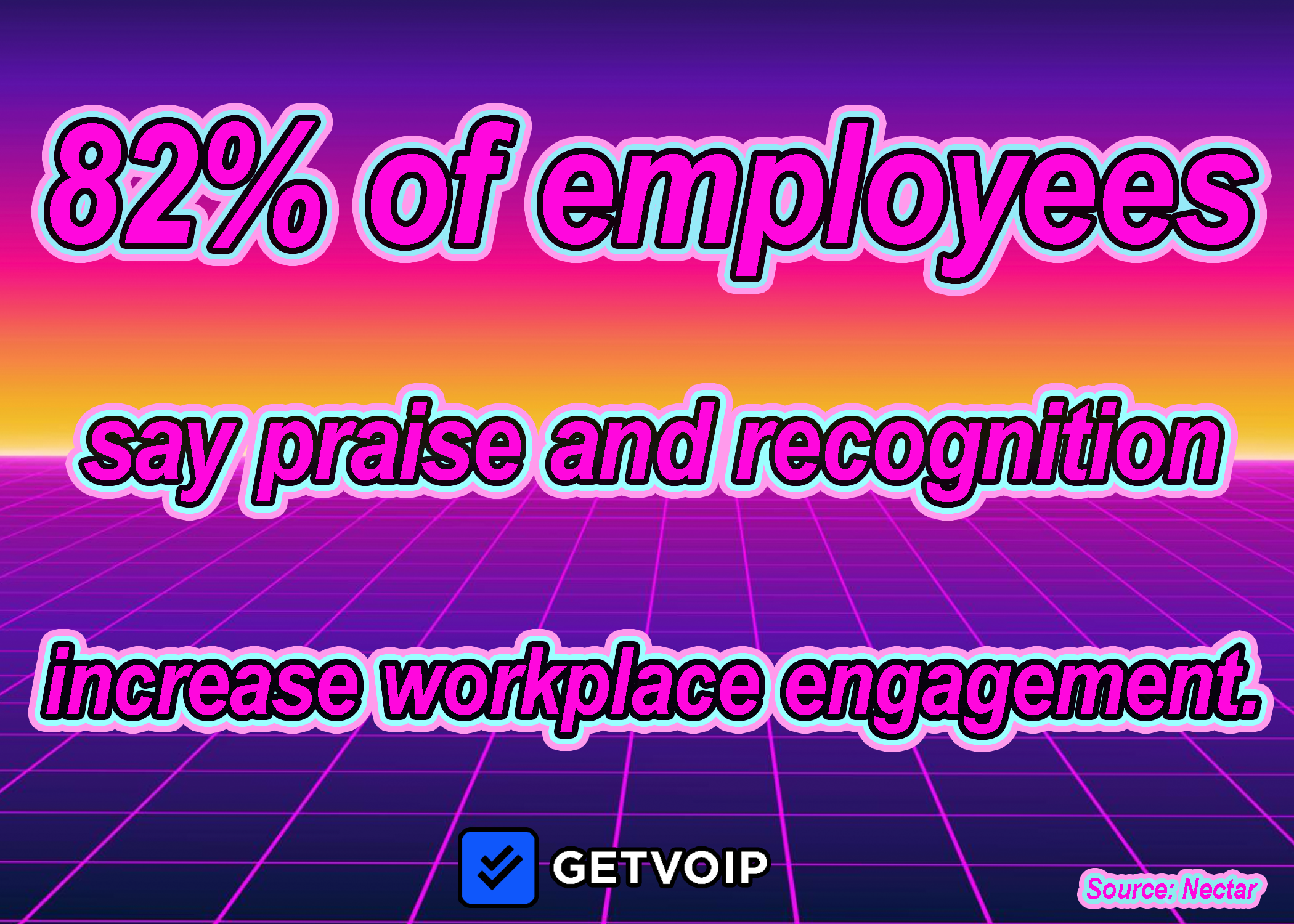Workforce Engagement Management (WEM) is a component of Workforce Optimization (WFO) focused on improving the employee experience, increasing agent retention, and strengthening overall contact center performance.
Today’s WEM solutions prioritize employee satisfaction over productivity alone, encouraging businesses to invest in current agents, promote from within, and identify common causes of agent burnout and high turnover rates.
Workforce engagement software provides holistic support to contact center agents throughout the employment lifecycle, from hiring and onboarding to continuing education and long-term workforce planning.
In this post, we define Workforce Engagement Management, explore its benefits and key features, and offer best practices for developing–and maintaining–a successful WEM strategy.
What Is Workforce Engagement Management (WEM)?
Workforce Engagement Management (WEM) is a contact center workforce optimization strategy that takes an employee-centric approach to routine business processes like hiring and onboarding, performance evaluation, quality monitoring, and agent scheduling.
WEM software features are designed to increase employee satisfaction and motivation while decreasing agent attrition and improving the customer support experience. Essential WEM capabilities include custom agent scorecards, in-call coaching, performance gamification, workflow automation, forecasting, agent scheduling apps, and AI speech+text analytics.
For contact center agents, Workforce Engagement Management solutions clarify performance expectations, ensure reps have the information and tools needed to excel at their jobs, and make employees feel more invested in their workplace. Effective WEM helps contact center managers meet deliverables, lower operating costs, and proactively address potential employee performance or customer journey issues before they get worse.
Workforce Engagement Management (WEM) vs Workforce Optimization (WFO)
The main difference between Workforce Engagement Management and Workforce Optimization is that WFO is a collection of workforce management tools used to increase contact center productivity and drive revenue, while WEM focuses on improving the employee experience to decrease agent turnover and improve agent performance.
WFO includes quality management, performance management, workforce management–and employee engagement management is just another aspect of the workforce optimization process.
The table below further breaks down the differences between WEM vs WFO:
| Workforce Engagement Management (WEM) | Workforce Optimization (WFO) | |
| Definition | An aspect of the WFO strategy that uses long-term employee engagement strategies to increase agent retention, strengthen agent performance, and improve CX | A complete contact center optimization strategy that includes forecasting and scheduling, WEM, quality assurance, workforce planning, performance monitoring, and AI analytics to increase productivity and profitability |
| Key Features | Gamification, agent coaching, agent scorecards/evaluations, agent assist, agent-facing scheduling apps, time and task management apps, employee onboarding+training tools | Speech+text analytics, forecasting+scheduling, adherence monitoring, real-time schedule adjustments, live KPI alerts, payroll management, customer surveys, Conversation Intelligence |
| Objectives | - Increase employee retention rates to lower operating costs
- Improve overall agent performance, increase agent morale |
- Avoid hiring additional agents
- Monitor agent performance and customer feedback - Optimize schedules to increase productivity - Manage high daily call volumes |
Benefits of Workforce Engagement Management
Focusing on workforce engagement and the agent experience instead of workforce optimization may sound counter-intuitive at first. However, prioritizing employee satisfaction and agent retention lowers operating costs, improves CSAT scores, and even increases upselling and cross-selling opportunities.

Increased Employee Retention
According to a Gartner study, agents who feel engaged, recognized, and invested in their workplace are 31% more likely to remain at their current job than those who do not. Given that call center agent attrition rates are anywhere from 30-45%, this equates to major cost savings.
Effective workforce engagement helps team members feel valued, motivated, and like their work offers value and purpose. Engaged agents seek to rise up at their current companies instead of job-hopping–a win for employees and businesses alike.
WEM features like gamification and wallboards publicly recognize and reward top agents, while agent-facing scheduling apps give agents greater flexibility and control. Automated workflows, Intelligent Virtual Agents (IVAs), and Conversational AI eliminate routine business processes that lead to employee burnout.
Better Agent Performance
An effective workforce engagement strategy dramatically improves agent performance, allowing businesses to meet targets and KPIs while providing an efficient, high-quality customer experience.
WEM scorecards, coaching module assignments, and call recordings with time stamps offer clear, actionable feedback that pinpoints exactly where an interaction went right or wrong. They also clarify performance expectations and give agents quantifiable evaluations.
These tools, especially when combined with live agent coaching and CTI screen pops, improve job performance for remote and in-house teams.
Improved Customer Experience
WEM benefits consumers just as much as employees, improving customer satisfaction and boosting Net Promoter Scores (NPS.)
CRM and helpdesk integrations with real-time Agent Assist automatically display essential client data, canned responses, and relevant internal knowledge base information on agent screens. This helps agents give the most accurate–and efficient–support possible, while still providing personalized customer service.
Intelligent omnichannel routing connects customers to the best available agent, increases first call resolution (FCR), and lets customers communicate with support agents on their preferred channel. Optimized scheduling strategies shorten call handle times, eliminate unnecessary call holds and transfers, and improve customer loyalty.
Higher Productivity Levels
Highly engaged employees are 21% more profitable than disengaged employees–proving a direct link between effective WEM and increased productivity.
Gamification, wallboards, and performance challenges incentivize agents to meet target KPIs, while time tracking tools help team members understand where they can be more efficient (and identify opportunities for automation.)
Detailed AI insights easily identify problems with call flows, routing strategies, and customer journey roadblocks–making it easier to optimize business processes and identify opportunities for customer self-service. Increased self-service keeps more live agents free to make sales calls, while in-conversation agent assist shortens call handling times.
Lower Operating Costs
Outsourcing customer service, hiring additional agents, or paying employees overtime may help manage high call volumes, but it eats away at profits. A recent SQM study found it costs an average of $20,800 to replace an existing call center agent–but WEM platforms can help.
In addition to improving your bottom line, effective workforce management increases agent retention rates so companies avoid the expense of agent turnover. Automation via Artificial Intelligence, customer callbacks, and self-service lower average handle times, decreasing the average cost-per-call.
Shorter Call Queues
Workforce management solutions optimize agent schedules and enable real-time reforecasting and automatic schedule adjustments. These tools also empower multi-skill and multi-channel agent scheduling, using intelligent omnichannel routing to cut down on call wait and call hold times across voice and digital channels.
Automated omnichannel self-service options let customers solve smaller issues without involving a live agent, keeping daily call volumes much more manageable.
Key Elements of Workforce Engagement Management
The features below illustrate how Workforce Engagement Management systems monitor, support, and optimize each part of the employee lifecycle.
Workforce Engagement Management features vary by provider and plan, but are usually included with top-tier all-in-one service bundles. Lower-tier pricing options may still offer basic WEM and WFM features, but only as paid add-ons.
Workforce Management
Workforce management is a WEM component encompassing forecasting, agent scheduling, workforce planning, adherence monitoring, and time tracking. Effective Workforce Management systems help call center managers meet staffing needs, optimize long and short-term schedules, predict trends in customer and agent behavior, and identify opportunities to automate time-consuming business processes.
The agent-facing scheduling app is an essential component of WEM. Agents can request and receive automatic approvals for PTO, edit their schedules, set preferred working hours, add skills, and participate in shift bidding and shift swapping. Best of all, they can do it on their preferred desktop or mobile device from any location with an internet connection.
Additional WFM Features include:
- Forecasting: Uses predictive analytics and a variety of customizable forecasting methods to create optimal contact center agent schedules
- Adherence Monitoring: Ensures agents are following assigned schedules, manages clock-in/clock-out, sends real-time alerts, monitors agent status/activity
- Intra-Day Management: Lets admins change (or automatically adjusts) agent schedules, call flows, call groups, etc. in real-time
- Custom Scheduling Rules: “What If” forecasting, rules-based scheduling, channel-based scheduling, etc.
- Time Tracking and Time Management: Uses historical and predictive analytics to estimate task lengths, monitors agent states and activity, identifies peak productivity hours/days
- Workforce Planning: Long-term hiring and scheduling forecasts comparing projected vs actual KPIs
Employee Recognition
Roughly 82% of employees say receiving praise and recognition for a job well done increases their workplace engagement. Even nonfinancial recognition, like WEM software gamification and coaching tools, can increase agent engagement by 55%.
Effective employee recognition can be the difference between positive and negative business outcomes. WEM solutions optimize and simplify the process, creating a better overall work environment.

Performance gamification apps turn productivity into a game with features like custom challenges, user avatars, wallboards, leaderboards, and more. Rewards dashboards let top agents choose from incentives like gift cards, extra days off, experiences, and more.
These games don’t just increase productivity–they also publicly recognize your best team members on company-wide platforms.
WEM software also includes real-time agent coaching and post-call feedback, strengthening employee-manager communication while providing opportunities for glowing performance reviews or 1:1 feedback.
Performance Management
Performance Management tools are one of the most important aspects of employee engagement. They help admins evaluate agent performance, offer post-call feedback, enable in-call coaching, conduct quality assurance, and optimize the employee training process.
Essential performance management features include:
- Call Monitoring: Real-time call monitoring with call barge and call whisper, call recording and transcripts with notes, agent tagging, automated post-call summaries
- In-Call Coaching: Using call whisper or chat messaging, agents can provide in-conversation agent coaching/feedback
- Agent Scorecards: Automated agent scoring with KPIs, custom or template-based agent evaluations, training module assignments, etc.
- Agent Dashboard: Customizable agent interface showing upcoming tasks, evaluations and scorecards, customer feedback, performance analytics, leaderboards, and assigned training modules
- Training/Onboarding: Admins can create training materials out of existing call recordings, automate the onboarding process, and assign employee training modules with deadlines and task assignments
- AI Agent Assist: Automated, in-conversation CTI screen pops that show relevant CRM/helpdesk data on agent screens
Quality Management
Quality management tools use AI-powered Conversation Intelligence, Natural Language Understanding, and speech/text analytics to monitor essential KPIs and identify opportunities for improvement.
Key quality management features include:
- Customer sentiment analysis
- Automated post-call summaries
- Pre-made reporting templates, custom KPIs, word cloud reports, report tagging and filtering
- Customer survey automation and analytics
- Live KPI alerts and push notifications
Employee Feedback
Creating custom Voice of the Employee (VoE) surveys helps call center managers understand the root causes of employee turnover and agent absenteeism, find gaps in agent training, and identify top performers.
Employee surveys should be anonymous and include questions in multiple formats (open-ended questions, rankings, true/false, multiple choice, etc.)
Popular VoE survey questions are:
- Do you feel listened to and valued by customers and your employer?
- Are you engaged in your work throughout the workday, or are you often distracted or overwhelmed?
- Do you have the resources–in terms of software and continuing education–to excel at your job? If not, what do you need to improve your job performance?
- Did the onboarding and training process adequately address employee expectations, HR policies, job requirements, and software training?
- Do you feel recognized for your hard work? If not, what would make you feel recognized?
- Do you plan to stay at this company? Why or why not?
Compliance
WEM features like call recording, transcription, and Conversational Analytics provide detailed insight into agent performance and customer satisfaction levels–but they also assist with compliance.
Workforce engagement software provides a searchable written and/or audio record of customer-agent conversations. Some WFM platforms even automate compliance functionality by creating schedules in line with union regulations or automatically scheduling breaks at required intervals.
Workforce Engagement Management Best Practices
Developing and implementing a successful Workforce Engagement Management strategy takes time, honest feedback from agents, and a careful study of contact center analytics.
Best practices for effective WEM include:
- Updated Training Materials: Ensure all employee training materials, onboarding documents, and HR policies are up-to-date and consistent across channels
- Continuing Education: Invest in your employees by identifying opportunities for continuing education like certificate programs, webinars, hands-on software training courses, and more
- Monitor Different KPIs: Get 360-degree insights into contact center activity and customer trends by tracking a variety of different metrics, not just a specific set of KPIs. Also vary scheduling rules, potential scenarios, and forecasting methods to ensure agents are prepared for different situations and call volumes
- Customer Feedback: In addition to employee feedback, use automated post-contact Voice of the Customer surveys to identify top performers and common support issues, optimize schedules and self-service, and show customers you value their opinions
- Incentives and Rewards: Continually incentivize superior customer support through games, challenges, and a variety of employee rewards top performers can choose from. In addition to private feedback, recognize your best agents publicly in company-wide emails, social media, and team messaging channels
Above all, invest in feature-rich omnichannel contact center software with built-in WEM capabilities, smart interaction routing, real-time and historical reporting, and advanced third-party integrations.
FAQs
We’ve answered the top Workforce Engagement FAQs below:



